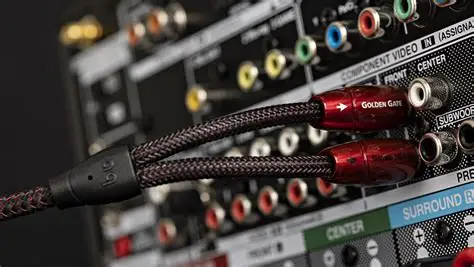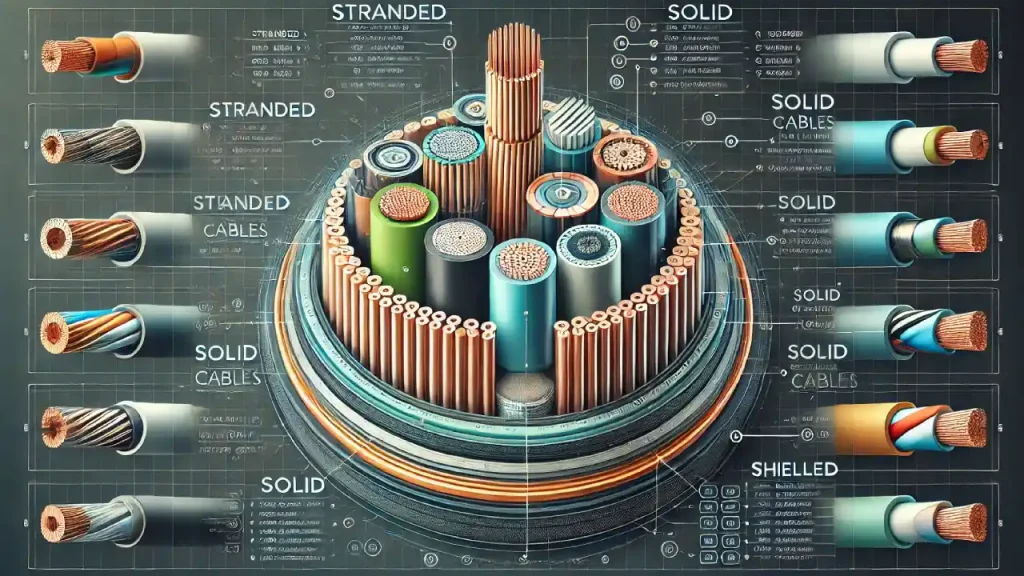
In the world of audio engineering and high-fidelity sound reproduction, discussions often revolve around amplifiers, speakers, and digital-to-analog converters. Yet, one often-overlooked component silently shapes the clarity, depth, and realism of the sound we experience—the cabling. Whether you’re an audiophile fine-tuning a home theater system, a recording engineer mixing in a studio, or a musician working with digital gear, the quality and design of your cables can make a noticeable difference.
Among the various audio transmission options available today, the digital audio coaxial cable remains a reliable, high-performance standard for transferring pristine digital signals between devices. Let’s explore how high-quality cabling influences modern audio performance, the science behind digital coaxial transmission, and why it still matters in an increasingly wireless world.
- The Unsung Hero: Why Cabling Still Matters
In an age dominated by Bluetooth, HDMI, and wireless streaming, it’s easy to assume that cables no longer matter. However, for anyone who values consistency, low latency, and uncompressed sound quality, wired audio connections remain the gold standard.
Cables are the physical medium through which electrical signals travel. Any imperfection—be it poor shielding, mismatched impedance, or subpar connectors—can cause noise, distortion, or data loss. While digital signals are less prone to degradation than analog ones, they are not immune to interference or transmission errors. The difference often lies in how well a cable preserves signal integrity from source to destination.
- Understanding Digital Audio Transmission
Digital audio transmits sound as streams of binary data (1s and 0s), representing samples of an analog waveform. This data must travel from one device to another—say, from a CD player to an AV receiver—without corruption or timing errors.
Two common methods of digital audio transfer are:
- Optical (TOSLINK): Uses light through a fiber optic cable.
- Coaxial (S/PDIF): Uses electrical signals over a shielded copper cable.
While both achieve the same purpose, digital coaxial cables are often preferred for their stability, compatibility, and durability, especially over longer distances or in environments with electrical interference.
- What Is a Digital Audio Coaxial Cable?
A digital audio coaxial cable is a type of cable designed to carry digital audio signals using electrical pulses over a 75-ohm coaxial conductor. It typically features:
- A solid or stranded copper core – conducts the signal.
- Dielectric insulation – maintains consistent spacing and impedance.
- A metal shielding layer (braid or foil) – prevents electromagnetic interference (EMI) and radio frequency interference (RFI).
- Durable outer jacket – protects the internal structure.
The term “coaxial” comes from the cable’s design—two conductors sharing a common axis—which provides excellent shielding and uniform impedance characteristics.
Digital coaxial cables use RCA connectors at both ends and are compatible with devices supporting S/PDIF (Sony/Philips Digital Interface).
- How It Differs from Analog RCA Cables
At first glance, a digital audio coaxial cable looks identical to a standard RCA analog cable—but they are far from the same. The key difference lies in impedance.
- Digital coaxial cables are precisely engineered to maintain a 75-ohm impedance, minimizing reflections and ensuring accurate digital signal transmission.
- Analog RCA cables, on the other hand, are not impedance-controlled and are optimized for low-frequency analog signals.
Using a regular analog RCA cable for digital audio might “work” in some cases but often results in data errors, jitter (timing distortions), or audible clicks and dropouts.
- The Role of Cable Quality in Digital Audio Performance
While digital signals are less susceptible to distortion than analog ones, they still require a stable, noise-free path. Here’s how high-quality coaxial cables improve performance:
- Consistent Impedance Control
A precise 75-ohm impedance ensures that the signal matches the input and output circuits of connected devices, minimizing reflections and transmission losses.
- Superior Shielding
Good shielding protects against interference from nearby power cables, Wi-Fi routers, or other electronic devices. Poorly shielded cables can allow noise to enter the signal path, resulting in jitter and audible degradation.
- Low Capacitance and Resistance
High-purity copper conductors and well-designed insulation reduce energy loss, ensuring the signal reaches the destination without amplitude variation or timing shift.
- Durable Build Quality
Gold-plated connectors resist corrosion and ensure consistent contact, while strong outer jackets protect the internal structure from bending or stress damage.
In short, better cable design doesn’t make the digital signal “better”—it ensures the signal arrives perfectly intact, exactly as the source intended.
- Jitter: The Silent Culprit in Digital Audio
One of the most important performance factors in digital audio transmission is jitter—tiny variations in signal timing that can cause audible distortions, particularly in high-resolution playback systems.
Even though digital audio is about 1s and 0s, timing errors can cause bits to arrive at slightly incorrect intervals. This affects the clock synchronization between devices, leading to subtle but perceptible issues such as:
- Loss of clarity or imaging.
- Slight harshness in treble frequencies.
- Reduced stereo depth.
A high-quality digital audio coaxial cable with proper impedance and shielding minimizes jitter by ensuring clean, consistent signal transitions and accurate timing.
- When to Choose a Digital Audio Coaxial Cable
A digital coaxial connection is ideal for:
- Connecting CD/DVD/Blu-ray players to AV receivers.
- Linking DACs (Digital-to-Analog Converters) to amplifiers.
- Professional audio setups requiring reliable S/PDIF connections.
- Longer cable runs (up to around 10 meters) where optical signals might weaken.
Coaxial cables offer wider bandwidth and stronger signal drive than optical cables, making them suitable for high-resolution audio formats like 24-bit/192kHz PCM and certain compressed multichannel formats (Dolby Digital, DTS).
- Myths vs. Reality About Digital Cables
The debate around cable quality often sparks controversy in the audio community. Some claim all digital cables sound identical since they transmit binary data, while others swear by the improvements of premium cabling. The truth lies somewhere in between.
- Fact: Digital data itself doesn’t change.
- Reality: The accuracy of transmission depends on signal integrity—affected by cable quality, shielding, and termination.
While you don’t need exotic or overpriced cables, investing in well-engineered, correctly spec’d digital coaxial cables ensures stable, interference-free transmission—especially in professional or high-end systems.
- Maintenance and Handling Tips
To get the most out of your digital audio coaxial cable:
- Avoid sharp bends or tight coils that may damage the shielding.
- Keep it away from power cords and high-current devices.
- Clean connectors occasionally with isopropyl alcohol to prevent oxidation.
- Replace damaged cables immediately—cracks or loose connectors can introduce data errors.
A little care goes a long way in maintaining consistent, high-quality performance.
- The Future of Audio Connectivity
While HDMI, USB, and network-based audio protocols like AES67 or Dante are gaining popularity, digital coaxial connections remain highly relevant. Their simplicity, robustness, and backward compatibility make them a preferred choice in both home and professional audio systems.
Moreover, as digital-to-analog converters and high-resolution streaming continue to advance, demand for stable, low-jitter connections will only grow. For many setups, a well-made digital audio coaxial cable still represents the perfect balance between traditional engineering reliability and modern audio fidelity.
Final Thoughts
In the pursuit of superior sound, every link in the signal chain matters—and cables are no exception. A digital audio coaxial cable may seem like a simple wire, but its precision engineering ensures that complex digital signals travel cleanly and accurately, preserving the music’s original detail and timing.
High-quality cabling won’t magically improve a bad recording or a weak amplifier, but it will allow your system to perform at its full potential—without interference, distortion, or data loss. In short, good cables don’t color the sound—they protect its integrity.
For modern audio systems that demand both precision and performance, the digital coaxial cable remains a trusted, high-fidelity connection that truly delivers—one bit-perfect signal at a time.





